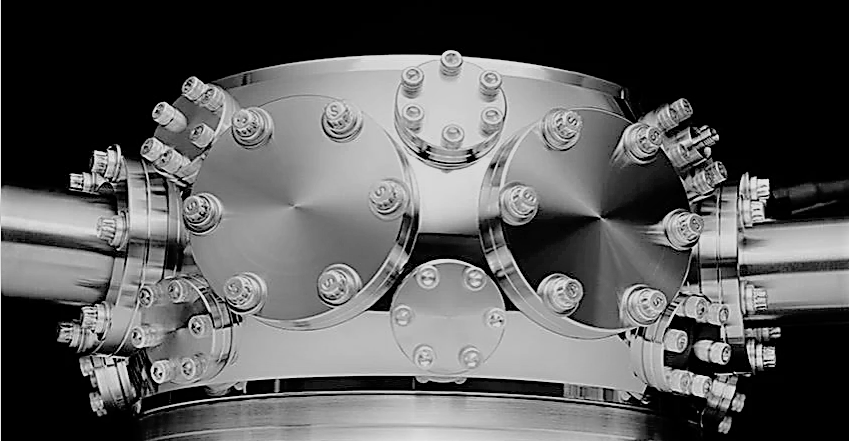The quantum computing effort at Honeywell appears to be heating up. Over the last several months, the company has announced a series of new developments in its trapped ion quantum computer research, which suggests that it is close to launching its first system.
If you weren’t aware that Honeywell had a quantum computing program, you are not alone. While the occasional terse news statement about this effort is posted on the company’s quantum solutions page, the tech giant has otherwise been rather tight-lipped about its plans in this area. A request from us for more information was met with: “We don’t have anything further to add on this front.”
Since October of last year, Honeywell has been offering these smaller tidbits on a regular basis. In November, the company revealed it had started testing its first-generation qubit devices, followed in January by the claim that it had “demonstrated record-breaking high fidelity quantum operations” on its trapped-ion qubits. In March, it announced it had demonstrated “parallel operating zones” on the device, which it believes will provide faster execution and more flexible qubit connectivity.
Despite the recent flurry of activity, the quantum computing effort at Honeywell has been going on underneath the covers for at least five years. Its roots go back to 2014, when Honeywell was one of the participants in a program for the Intelligence Advanced Research Projects Activity (IARPA) that involved research into trapped ions. After the IARPA program wrapped up, the company went on to build six different quantum computing devices based on some of that early work.
The use of the trapped ion technology puts Honeywell in rare company, since the most visible companies pursuing quantum computing, including IBM, Google, Intel, and Rigetti, are basing their hardware on semiconductor technology. IonQ, which we profiled in April, is the only other company we know of that is employing trapped ions for its qubits. Like Honeywell, IonQ is using ytterbium (Yb) atoms for its ion traps.
Honeywell’s attraction to trapped ion technology mirrors that of IonQ, namely that these atomic level structures are totally uniform, naturally resistant to error-producing noise, and can be connected to one another in different configurations at runtime. While this technology doesn’t have the decades-long history and proven scalability of semiconductors, at this point, it offers the most interesting alternative for solid-state quantum computing.
As of last year, the company was evaluating different architectures, including one-dimensional arrays of ions and a more scalable design using two-dimensional arrays. The latter removes the limits in the number of qubits that can strung together in a linear arrangement.
Fidelities for single qubits on Honeywell’s prototypes are reported to be as high as 99.997 percent, which the company claims is the best in the business. (For what it’s worth, IonQ says it has achieved 99.97 percent single-qubit fidelities.). According to Tony Uttley, who heads up the Honeywell Quantum Solutions group, the high quality of its qubits can be attributed to its expertise in atomic physics, optics and precision control systems. However, since Honeywell has yet to report results for two-qubit fidelity, which is considered to be the better metric, it’s difficult to make any definitive comparisons with technology from IonQ or any of the other quantum computing entrants.
Uttley and his team, which is made up of about 100 physicists, engineers, and technicians, are singularly focused on designing and developing trapped-ion quantum computers for the commercial market. Although no product roadmap has been publicly offered, he expects to have its first system up and running before the end of 2019. The plan is to make that a testbed system, which will be accessible to researchers, companies, and physicists.
“We believe that quantum computing will eventually have a significant impact on all multi-industry companies,” says Uttley. “When that happens, those companies will need to figure out how to respond to either take advantage of or mitigate the business changes stemming from the technology. Our approach is to influence how quantum computing evolves and shape the opportunity for Honeywell and our customers.”

